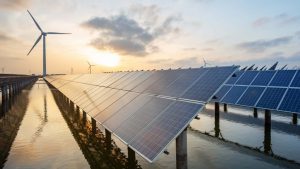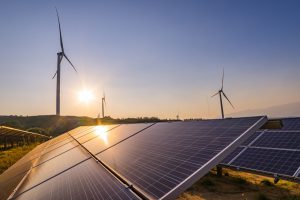1. A future based on renewable energy
Faced with climate change, rising energy prices and concerns about supply security, renewable energy sources such as wind and solar power seem to be a clear direction. What will it take to transform Europe’s existing energy system into one based on renewable sources?
The war in Ukraine and its consequences for global and especially EU energy supplies, and the worsening effects of climate change have dominated the news headlines this year. all over the world. We’ve read about volatility in global energy prices, concerns about winter energy shortages and record-breaking droughts hitting agricultural production at a time when food prices have risen. .
These problems are connected. If we can replace fossil fuels with abundant renewable energy, we will lower energy prices, reduce emissions, and reduce future risks of climate change, including impacts on production. food export.

2. Away from the fossil energy past
Fossil fuels, such as oil, gas, and coal, are made from decaying plant and animal remains that have been converted to their present form over millions of years in the Earth’s crust and layers of fossil fuels. It. Fossil fuels contain chemical energy, which is released along with various pollutants when burned.
Compared to electricity, which can be generated from renewable sources, such as solar and wind, but is quite difficult to store, fossil fuels are easier to store and transport to the end user. The energy infrastructure and technology developed since the Industrial Revolution is largely based on the use of fossil fuels.
In recent years, EU policies have set ambitious targets to accelerate the transition to sustainable energy. And these are already beginning to bear fruit, with a growing share of Europe’s energy needs being met through renewable energy sources.
By 2021, more than 22% of all final energy consumed in the EU will come from renewables. However, the share of renewables in the energy mix varies considerably across the EU: in Sweden it is around 60%; in Denmark, Estonia, Finland and Latvia more than 40%; and in Belgium, Hungary, Ireland, Luxembourg, Malta and the Netherlands between 10% and 15%.
According to Eurostat data, wind and hydroelectricity together account for more than two-thirds of all electricity generated from renewable sources (36% and 33% respectively) in the EU in 2020. again from solar energy (14%). ), solid biofuels (8%) and other renewable sources (8%).

3. Unlimited potential with renewable energy but….
Natural sources — such as solar, wind, tidal, and geothermal energy — have the potential to generate more energy than the world currently needs. However, this potential does not match what we can currently achieve. One challenge is establishing enough capacity to capture energy, such as sunlight or wind, and convert it into a usable form, such as electricity. Another challenge is being able to transport energy where it is needed or store it for later use.
An energy system of the future needs to be resilient and adaptive to the inevitable impacts of climate change, such as droughts, heat waves, and hurricanes. As the ratio of wind and solar energy increases, the system also needs to be flexible enough to function well even when the wind is not blowing or the sun is not shining.
A flexible power system can ensure a stable power supply and reduce peak demand. In addition to ensuring diversity in energy sources, the system can be improved, for example, by improving energy storage, intelligently integrating the heating, transportation and industrial sectors or address peak demand through dynamic pricing or grids and smart devices.



